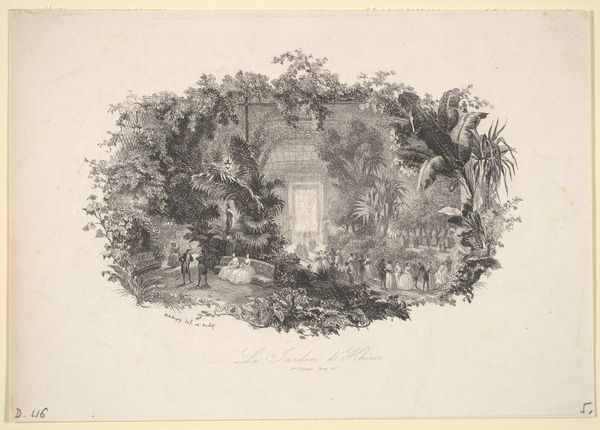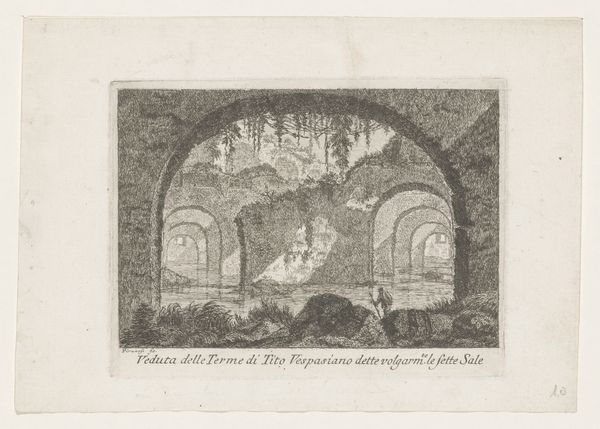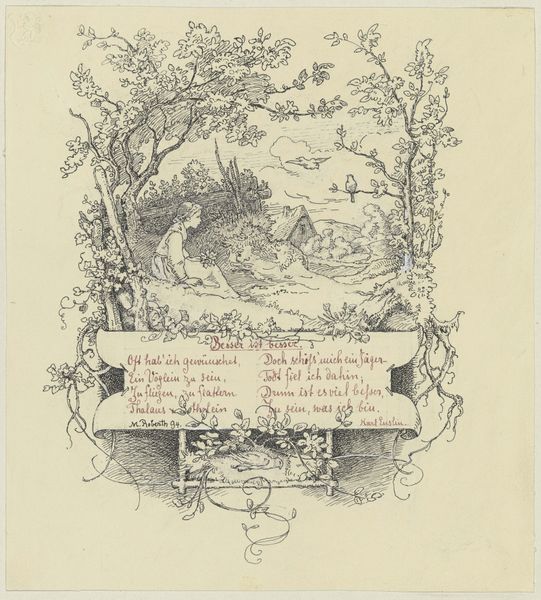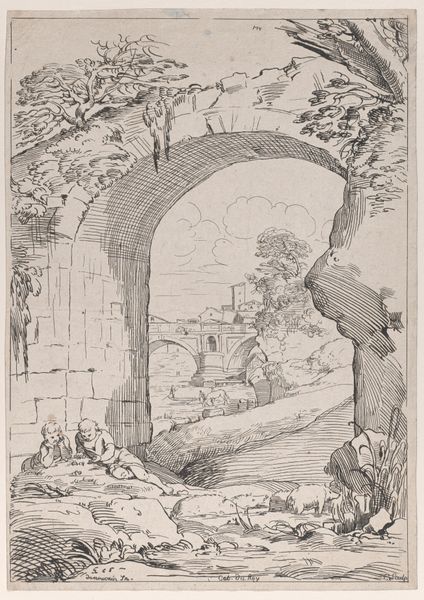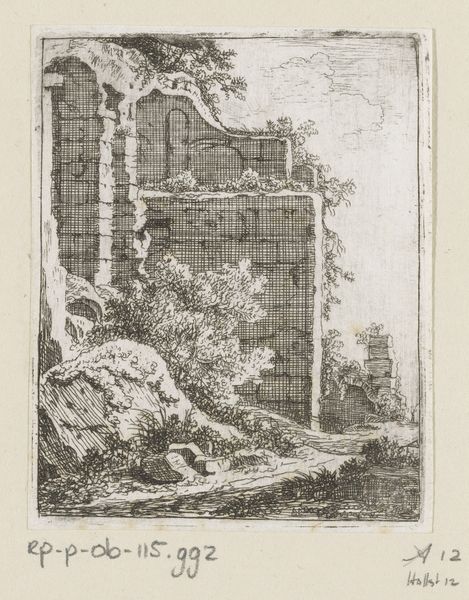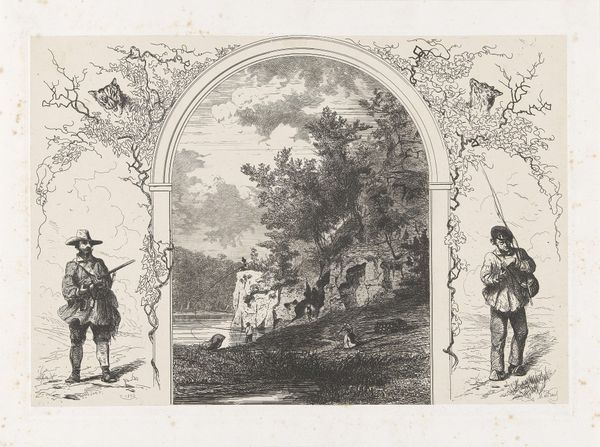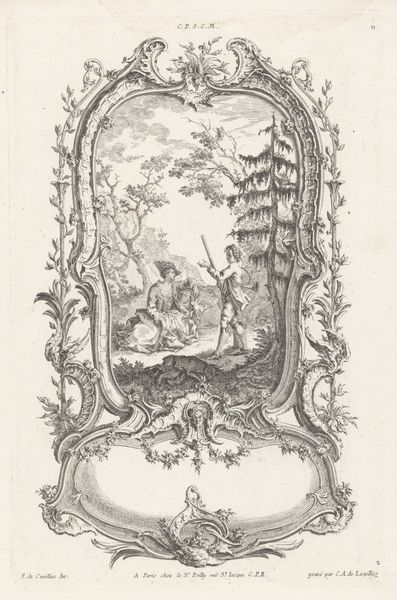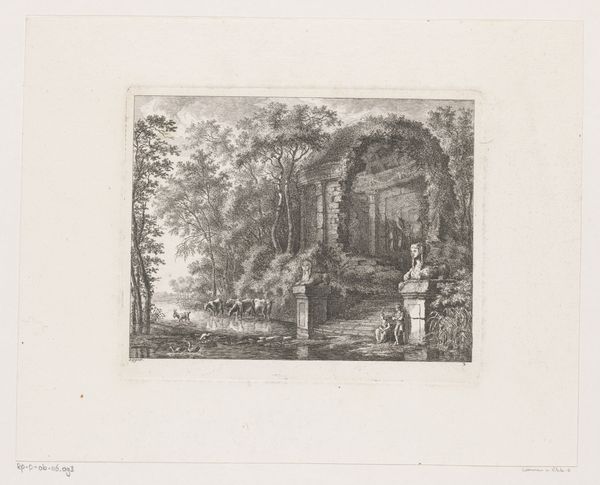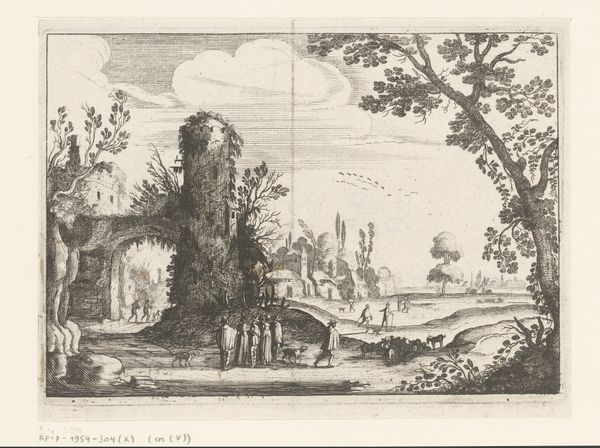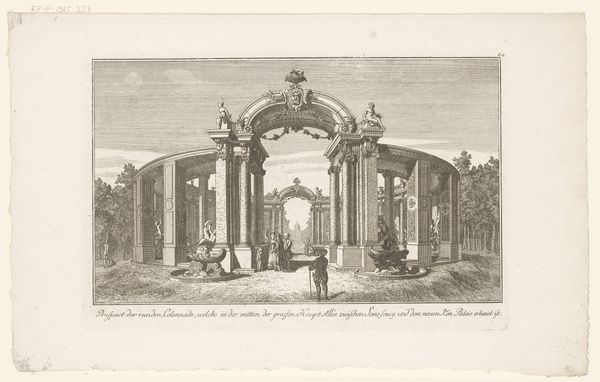
Dimensions: height 232 mm, width 324 mm
Copyright: Rijks Museum: Open Domain
Editor: So, here we have "Rocks with Fishermen" by Martinus Antonius Kuytenbrouwer Jr., dating back to 1853. It’s an ink drawing on paper. What strikes me is the contrast; the ruggedness of the rocks versus the almost ornamental border around the central image. How do you approach this work? Curator: From a materialist perspective, it’s compelling to examine the labor involved in creating such a detailed drawing with pen and ink. Consider the social context: romanticism often idealized rural life, but this idealized view depended on very real labor. Do you see how the drawing meticulously captures the details of both the natural environment and the figures engaged in labor within it? Editor: Yes, the rendering of the figures, like the fishermen and the woman further off. Do you think the ornate border around the drawing connects to any aspect of consumption or labor? It seems so decorative compared to the work taking place in the landscape within the border. Curator: Absolutely. The border, meticulously crafted, speaks to a separation between "high art" and craft. Is the artist questioning these social constructions and separations of labor in romanticism by bringing the fishermen inside such an intricate and artificial looking border? It could be read as a commentary on how nature is consumed by the upper classes and a subtle challenge to traditional artistic hierarchies through his labor-intensive methods. Editor: That’s fascinating! I hadn’t considered the border as part of the artist's labor, it almost feels as if it is, quite literally, containing those doing work! Thanks, that gave me a completely new way to view the work. Curator: My pleasure! It’s all about understanding how materials, production, and consumption intersect within the artwork and its historical moment.
Comments
No comments
Be the first to comment and join the conversation on the ultimate creative platform.

